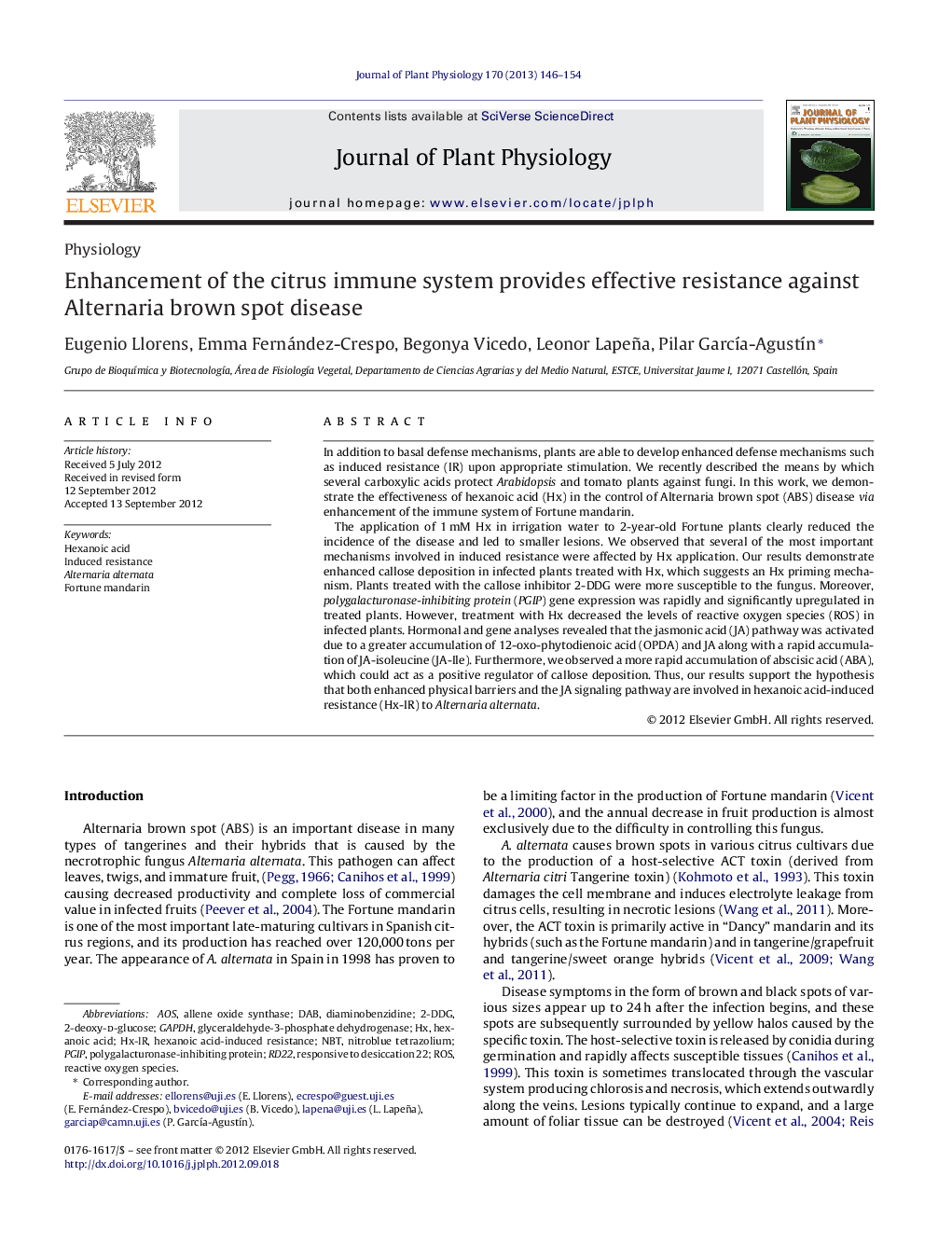| Article ID | Journal | Published Year | Pages | File Type |
|---|---|---|---|---|
| 2056573 | Journal of Plant Physiology | 2013 | 9 Pages |
In addition to basal defense mechanisms, plants are able to develop enhanced defense mechanisms such as induced resistance (IR) upon appropriate stimulation. We recently described the means by which several carboxylic acids protect Arabidopsis and tomato plants against fungi. In this work, we demonstrate the effectiveness of hexanoic acid (Hx) in the control of Alternaria brown spot (ABS) disease via enhancement of the immune system of Fortune mandarin.The application of 1 mM Hx in irrigation water to 2-year-old Fortune plants clearly reduced the incidence of the disease and led to smaller lesions. We observed that several of the most important mechanisms involved in induced resistance were affected by Hx application. Our results demonstrate enhanced callose deposition in infected plants treated with Hx, which suggests an Hx priming mechanism. Plants treated with the callose inhibitor 2-DDG were more susceptible to the fungus. Moreover, polygalacturonase-inhibiting protein (PGIP) gene expression was rapidly and significantly upregulated in treated plants. However, treatment with Hx decreased the levels of reactive oxygen species (ROS) in infected plants. Hormonal and gene analyses revealed that the jasmonic acid (JA) pathway was activated due to a greater accumulation of 12-oxo-phytodienoic acid (OPDA) and JA along with a rapid accumulation of JA-isoleucine (JA-Ile). Furthermore, we observed a more rapid accumulation of abscisic acid (ABA), which could act as a positive regulator of callose deposition. Thus, our results support the hypothesis that both enhanced physical barriers and the JA signaling pathway are involved in hexanoic acid-induced resistance (Hx-IR) to Alternaria alternata.
